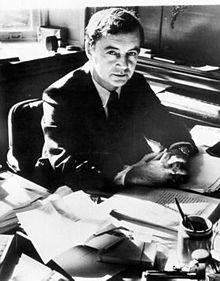Erving Goffman was a Canadian American sociologist, social psychologist, and writer; he was known to be the most influential figure in American sociology in the 20th century. Goffman was influenced by the many greats of the sociological sphere but Everett Hughes is regarded as the most influential figure of his life. Goffman has always been associated largely with the symbolic interaction school of sociological thought but he does not completely believe in himself to be the advocate of the theory. Many other scientists conclude that Goffman’s studies are difficult to be reduced to specific and limited themes; they believe his studies are “comparative, qualitative sociology that is aimed to produce generalizations about human behavior”.

Early Contributions
Goffman had been known to make significant progress in the study of face to face interactions, the elaboration of the “dramaturgical approach” to human interaction and other such concepts which have been influencing the field of sociology.
The dramaturgical approach is described as the perspective used in micro-sociological accounts of social interaction every day. He further described the aspects of the approach being affected by time, place and audience. For Goffman, the word “self” was explained through the dramatic effect which came out when a situation presented itself.
Major Contribution: Symbolic Interactionism
The concept of symbolic interactionism basically refers to the peculiar and distinctive character of interaction as it takes place between human beings. It is basically referring to the social interactions as a cycle of events and every step corresponds to a certain stimulus or reaction. There are meanings assigned to a certain symbol and these symbols are used in a sense as for the other to understand their significance. These symbols are needed to be viewed by the other individual in the same light as the person that they are talking to. For instance, the symbol of an image of a gun is often associated with violence, but others may associate different feelings to the same symbol, for a terrorist it is a mean to spread terrorism, whereas for a child it’s merely a toy.
The symbolic interaction is also used to interpret stimulus and response and is also related to the development of oneself through interactions in a conversation. The interactions made between people is often associated with responses, these responses are given through the understanding of the meaning behind what the other person has said and not just their words. A person would look to understand the meaning behind something instead of just replying, they would look to find the meaning and reply using the same emotion or a different response according to his interpretation. Hence, it would be safe to say that the interaction of humans is mediated by the use of symbols by either interpreting or ascertaining the other person’s reaction.
There are certain principles which are associated with the concept of social interactionism, they are basically the observations made on human nature. Humans are believed to have the capacity for thought unlike the lower animals; hence the social interactions are of the utmost essence to them. Social interactions become necessary as they provide a distinctive construct for humans interacting with each other, they showcase interactions with the help of symbols which assert a common ground in the conversation. As people grow because of these interactions, they learn to interpret and analyze these symbols in a more informative way. This helps people to analyze the pros and cons of certain things which in turn help make decisions. Hence, these patterns come together for people to learn more about humans and their nature, and make societies or groups of people.
Life as a Drama
When Goffman was developing the symbolic interactionism theory, he saw the men and women of the world as part of a drama, playing specific roles. “Role taking” is a key aspect for the success of the drama. He believes that their “roles” were constructed keeping the society in mind, he views society as a drama these interactions are very “unscripted” which lead to successful human interactions in society. He believes that the roles given in life provide more meaning to it. The roles would enable a person to portray oneself in a light which was “true” but “developing” and at the end of the drama, one would present their true self.
The Criticism
The biggest criticism for Goffman was his interaction with a limited number of people and leaning towards a very subjective methodology of research. The critics believed that Goffman had no system when he formulated these theories and that they were prone to miscalculations and the results wouldn’t hold much relevance if an objective study would be conducted. They also believed that if the same study was conducted on a large group of people, then the idea of symbols would be very hard for them to fathom as all of them wouldn’t be from the same background
